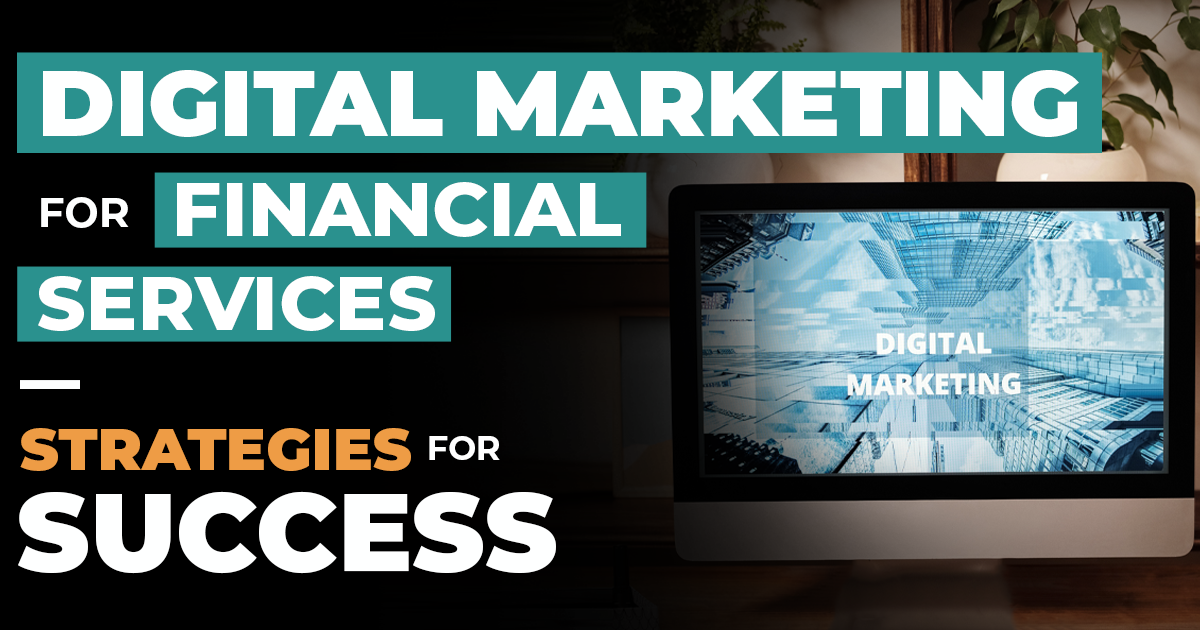In today’s tech-driven world, the Digital Marketing for Financial Services industry is undergoing a profound transformation. The financial services industry has witnessed a seismic shift in recent years, largely due to the rapid integration of technology. From online banking and mobile payment apps to roboadvisors and blockchain, technology is reshaping the way we manage, invest, and interact with money. Traditional banking and financial institutions are embracing digital marketing strategies to stay competitive and relevant. In this blog, we will delve into the realm of digital marketing for financial services and explore how this dynamic approach can drive growth, enhance customer engagement, and foster trust in the ever-evolving financial sector.
Importance of Digital Marketing for Financial Services
Digital marketing is an invaluable asset for financial institutions seeking to achieve success in today’s highly competitive landscape. By leveraging the power of digital channels, financial institutions can effectively reach their target audiences, build brand awareness, and establish trust.
Through personalized content, such as informative blog posts, social media engagement, and targeted email campaigns, they can connect with customers on a more profound level, addressing their financial needs and concerns directly. Furthermore, data-driven strategies enable financial institutions to measure and refine their efforts continuously, optimizing customer acquisition, retention, and return on investment. Digital marketing success is measurable. Using analytics tools can enable you to track key performance indicators (KPIs) such as website traffic, conversion rates, and customer acquisition costs. Analyze data at regular intervals to refine your strategies and achieve better results.
In essence, digital marketing empowers financial institutions to adapt to the evolving preferences and behaviors of modern consumers, ultimately leading to increased market share, profitability, and long-term success. Understanding digital marketing for financial services Before diving into specific strategies, let’s establish a foundation by understanding what digital marketing entails in the context of financial services:
- Online Presence is Paramount: Digital marketing for financial services can help establish a strong and clear online presence. This includes having a user-friendly website, a mobile app, and a strong presence on social media platforms. Your online presence serves as the digital storefront for your financial institution.
- Customer-Centric Approach: Digital marketing in financial services requires a customer-centric approach. Understand your target audience’s requirements, pain points, and choices. Tailor your marketing efforts accordingly to provide value and build trust.
- Compliance and Data Security: The financial industry is highly regulated, and digital marketing efforts must adhere to strict compliance standards. Make sure your digital marketing strategies are compliant with the relevant regulations, such as GDPR or FINRA.
- Personalization and Automation: Use data analytics and customizable automation tools to deliver personalized content and promotional offers to your customers. Personalization enables you to enhance the customer experience and boost engagement.
Effective Strategies for Digital Marketing for Financial Services
Now that we have a solid foundation, let’s delve into specific digital marketing strategies tailored to the financial services sector:
- Content Marketing: Content is king in digital marketing. Create high-quality, informative content that addresses your audience’s financial concerns and questions. Content marketing can be done through blogs, articles, videos, and infographics. Establish your institution or organization as a trusted source of financial information.
- Search Engine Optimization (SEO): Website optimization for search engines can improve visibility in search results. Conduct in-depth keyword research to dig out the keywords your target audiences are searching for in financial services. Create valuable content around highly targeted keywords to attract organic traffic.
- Pay-Per-Click Advertising (PPC): Using paid advertising on SERP and social media can help you reach a wider audience. PPC campaigns can be highly targeted, ensuring your ads are seen by users interested in your services. Monitor and moderate your campaigns to maximize ROI.
- Social Media Marketing: Harness the power of social media Marketing to engage with your audience. Share financial tips, industry insights, and customer success stories. Use social media advertisement tools like Facebook and Instagram Ads to target demographics and promote your services.
- Email Marketing: Email marketing remains a potent tool for financial institutions. Send personalized emails to nurture leads, provide updates, and offer exclusive promotions. Segment your email list to tailor content to different customer groups.
- Influencer Marketing: You can hire influencers. There are many benefits to hiring social media influencers. Partner with financial influencers or thought leaders to promote your services. Their endorsement can build trust and credibility with your audience.
- Mobile Marketing: Mobile optimization of your website and marketing materials has become essential with the growing use of smartphones for financial transactions; a mobile-friendly approach is essential.
Conclusion
Digital marketing for financial services requires a deep understanding of your audience, compliance with industry regulations, and a commitment to delivering valuable, relevant content. By embracing digital marketing strategies and staying agile in an ever-changing landscape, financial institutions can thrive in the digital age. Digital marketing for financial services can help organizations offer personalized customer-centric services and enable you to promote awareness about the brand, attract new customers, and retain existing ones while fostering trust and credibility.
Also Read About: How to Become a Social Media Influencer: Tips and Tricks




